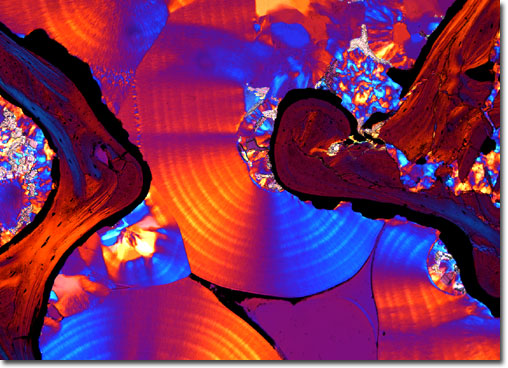|
Fossils may include the preserved remains or imprints of an organism, such as bones, teeth, footprints, or leaf impressions. To become fossils, these items must undergo some form of mineralization, which involves the replacement of decayed organic matter with silica, calcite, iron, and other minerals. This process can be quite lengthy, many scientists believing that fossilization takes more than 10,000 years to complete. The exact rate of mineralization that takes place, however, depends heavily upon the chemical characteristics of the surrounding environment.
|
